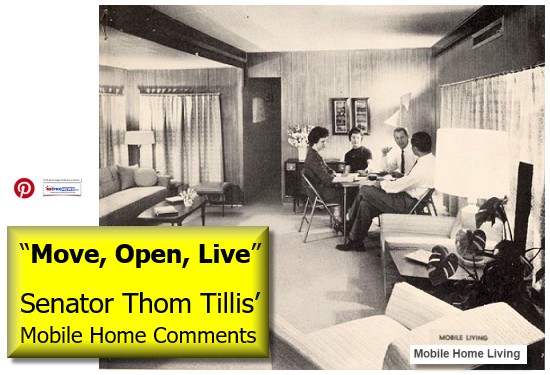
When U.S. Senator Thom Tillis (R-NC) spoke at an oversight hearing with HUD Secretary Ben Carson about a “mobile home” with a “bump out,” likely few understood just how keen an insight that statement was.
Back in the pre-HUD Code days of the factory-built home industry – prior to June 15, 1976 – there were mobile home models that had “pull outs,” “expando room” or “bump outs.” It is likely that Tillis’ personal experience with that which prompted his timely “walk down memory lane.”
Consider those mobile home era “bump outs” as similar to the slide outs found in RVs, only in mobile homes, they were routinely larger.
Bump outs, slide outs, and ”tip outs” existed in the early manufactured home era too. But they were largely supplanted by the advent of multi-sectional so-called “double-wides” and “triple-wides.”
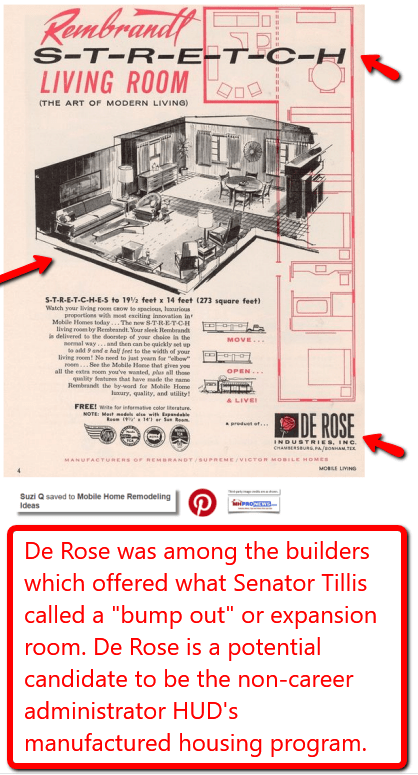
The images of classic ads and reports above and below, all found on Pinterest and are sourced as noted.
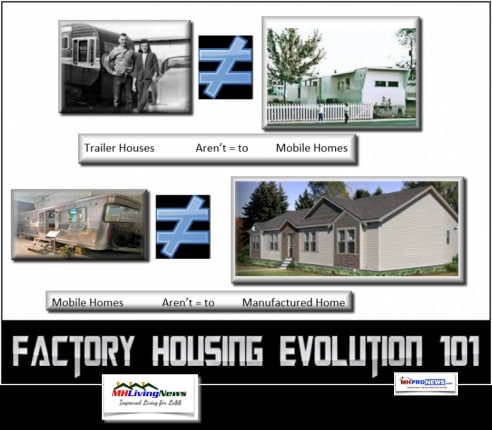
These images provide several insights relevant to the manufactured housing industry today. Consider these bullets:
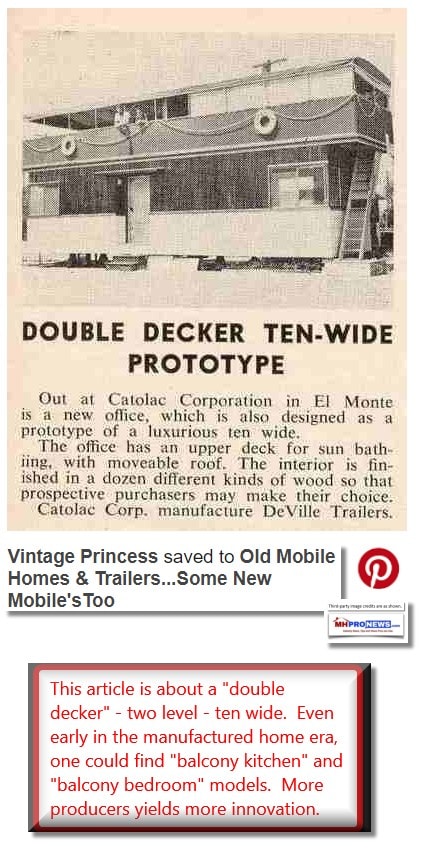

- Mobile homes – housing units on frames built prior to June 15, 2976 – were statistically more accepted then than manufactured homes are today. There’s an open question on why, which the Urban Institute, this publication and others have asked (for more on UI, and that question, click the related reports, below.)
- Mobile homes had greater diversity than there is found in manufactured homes today.
- Mobile homes had more manufacturers by far than there are found in the manufactured home industry today.
- Mobile home leaders organized and promoted the creation of the HUD Code, following highly public scandals with substandard homes built by a few producers that quality builders didn’t want to be associated with. The HUD Code grew out of a desire to set construction standards, safety and energy standards for manufactured homes that would give consumers confidence, while avoiding the placement hassles that have sadly become so common today.
The history of the mobile home and manufactured home (MH) industry is fading, and that is problematic.
Because without an accurate industry history, a complete understanding of just how important this type of housing used to be, and how it helped create affordability then – and could again today – holds valuable insights.
Prior to the HUD Code, HUD studied factory home building – “industrialized housing” – with enthusiasm. What happened to that enthusiasm since the creation of the HUD Code?
Will Secretary Carson – who praised HUD Code manufactured homes when Senator Tillis’ question promoted a response – fuel a rebirth of that embrace by HUD of reasonable regulations that help promote practical housing solutions?
How many in government – or industry – today realize that when the industry had a wealth of producers, there were also a far wider variety of styles, types, innovations and models that industry contraction has arguably practically cut off?
More such factory home producers also yielded more acceptance, because each producer were naturally marketing their product, as the story and ads reflect.
About De Rose – It’s Worth Noting…
Vic De Rose, an attorney who was jointly recommended by the Manufactured Housing Institute (MHI) and the Manufactured Housing Association for Regulatory Reform (MHARR) is from the family whose name the De Rose Industries of yesteryear recalls. De Rose has insights on factory-home building that the vast majority of the population – including most regulators – do not have.
The De Rose ad touts the message, “Move. Open. Live.” It’s quality, affordable housing in a hurry, as popular performer and manufactured home owner Kid Rock observed in an interview last year.
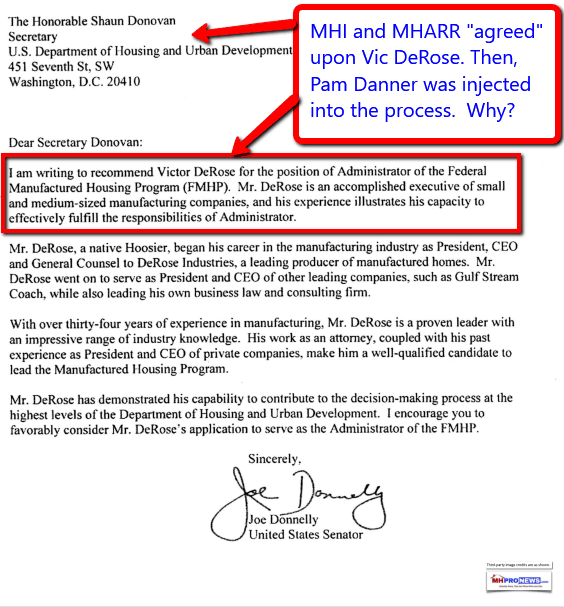
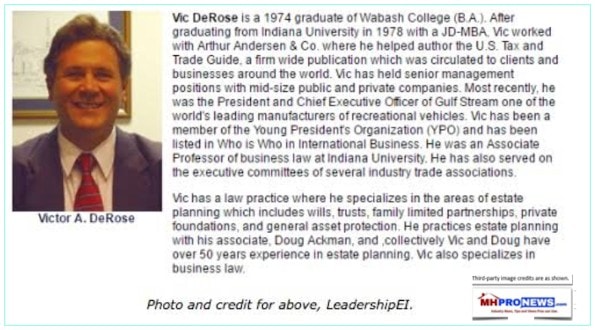
HUD has been silent on the subject of who is going to replace Pam Danner. There is speculation that an announcement could take place later this month. If that’s so, it may be a troubling signal for the industry if it takes place in conjunction with a planned appearance by Secretary Carson with MHI’s Las Vegas event. “We Provide, You Decide.” © ## (News, analysis and commentary.)
Related Reports:
https://www.manufacturedhomelivingnews.com/hud-secretary-ben-carson-and-senator-thom-tillis-discuss-affordable-housing-and-manufactured-homes-video/
https://www.manufacturedhomelivingnews.com/po-dunk-performer-kid-rock-eyes-senate-run-makes-manufactured-home-living-hip/
Documented Results from Manufactured Housing Industry Leadership
(Third party images are provided under fair use guidelines.)

Soheyla is a managing member of LifeStyle Factory Homes, LLC, the parent company to MHProNews, and MHLivingNews.com.

























